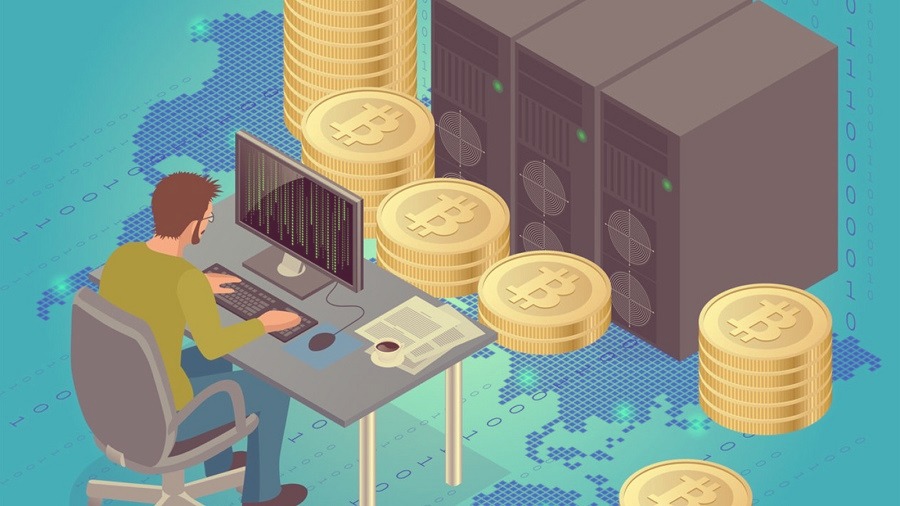In a digital world, the term ‘mining’ means maintaining a distributed network and creating new blocks in the chain. For new blocks, participants can receive a reward in the form of new units of cryptocurrency. The calculations performed on this stage are needed to protect users and the system against ‘double-spending.’
People who mine cryptocurrencies support the work of the network and spend computing power and electricity, so they deserve a reward. The process of issuing new coins is distributed among all participants, it is decentralized, does not depend on any regulatory authorities, and the volume of cryptocurrency emission is known in advance. The participant who added a new block to the transaction database receives a portion of new coins. Let us analyse the essence of cryptocurrency mining on the example of the major system, Bitcoin.
Complexity of the Bitcoin network
This network recalculates the level of complexity every 2016 blocks (it is about once every 2 weeks). The complexity increases or decreases depending on how much the creation time of this batch of blocks differs from 20160 minutes (2016*10). This mechanism retains the time for one block generation at the level of ten minutes on average, regardless of the total power of all miners.
The probability of success is proportional to the portion of computing power used in the total power of the entire network, but at a particular moment the result is random. After the formation of every 210 thousand blocks (about once every 4 years), it is programmed to decrease the amount of reward in half. It turns out that its value decreases exponentially. Therefore, the total volume of bitcoin emission is limited as the sum of the members of a decreasing geometric progression. As a result, it will not exceed 21 million. 12.7 million bitcoins were already in circulation as of May 2014.
Emission of bitcoins
The only opportunity for additional emission of bitcoins is to receive a reward for generating the next block. It is credited after receiving 120 confirmations, that is, the system will allow you to spend the reward in about 20 hours. The amount of reward for a certain period has a fixed value.
Initially, creating a new unit emission size was 50 bitcoins, but in November 2012, the first reduction of reward occurred — from 50 to 25 BTC. Then, in July 2016, the second reduction occurred — from 25 to 12.5 BTC. We can suggest that in 2031, the emission will be brought to zero and a reward will no longer be charged for creating new blocks. Then, perhaps over time, commission fees will become the main source of reward for generating new blocks.
The rules of bitcoin emission gave serious advantages to those enthusiasts who discovered mining earlier than anyone else did, when the total network capacity was still low, such as in 2010. By 2013, to generate a block, it was necessary to perform almost half a million times more work. Generation of new blocks became more expensive along with an increase in the total power of miners.
In alternative cryptocurrencies, calculation of hash and target complexity level can seriously differ.


 Telegram
Telegram 
